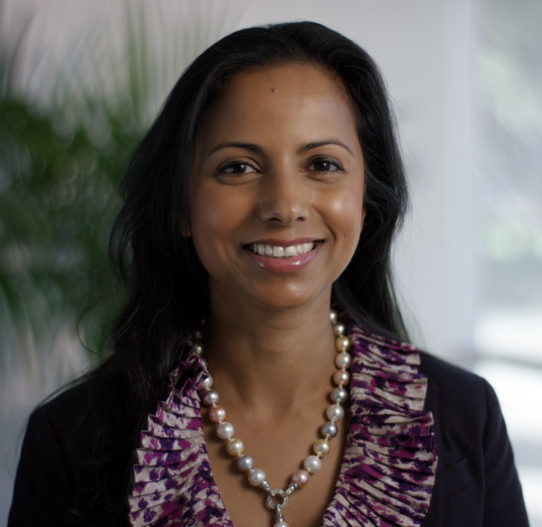 October is National Breast Cancer Awareness Month, and so we wanted to take a moment to share some very important breast health information with you, the busy mom. If you are like me, you barely have time to wash your hair in the shower, let alone do a breast examination. But, it is incredibly important for us to stop, pay attention to our bodies, and take care of ourselves. Our children need us to be healthy!
October is National Breast Cancer Awareness Month, and so we wanted to take a moment to share some very important breast health information with you, the busy mom. If you are like me, you barely have time to wash your hair in the shower, let alone do a breast examination. But, it is incredibly important for us to stop, pay attention to our bodies, and take care of ourselves. Our children need us to be healthy!
We had the special privilege to speak with Dr. Jessie Jacob, a local board-certified, fellowship-trained radiologist and mom who has dedicated her breast imaging practice, Northern California Women’s Imaging Center, to caring for women in our community. Below is our interview on the importance of breast awareness and self-examination for early breast cancer detection.
MPMB: Why is it so important for busy moms to stop and take time to examine their breasts?
Dr. Jacob: Being a mom of three, I realize that it is far too easy to concentrate on putting out our day-to-day fires. By definition, moms are absorbed in the health and welfare of others. Why should we go through the many unpleasant hoops needed for breast cancer detection? The reason why we perform screening mammography, clinical breast exams, and self-breast awareness is to find breast cancers early. The earlier a breast cancer is detected, the higher the chance of survival.
- The 5-year relative survival rate for women with stage 0 or stage I breast cancer is close to 100%.
- Metastatic, or stage IV breast cancers, have a 5-year relative survival rate of about 22%.
*SEER database (2007-2013)
MPMB: When is the best time to perform a breast self-examination?
Dr. Jacob: Although breast self-examination is helpful, it is more important to be “aware” of your breasts. The key concept of “awareness” is to recognize active changes that are occurring within your breasts. Are there focal lumps, pain or changes to the skin or nipple?
Also, when it comes to self-breast exams and awareness, there needs to be consistency. Pick the same day every month – put that date in your smartphone. Preferably, the day you pick should not fall in the time of the month when your breasts are more sensitive. The ideal time to perform a breast self-exam is about 7 days after your menstrual cycle begins (with day 1 being the first day of menstrual bleeding)
MPMB: How do you perform a self-exam?
Dr. Jacob: Self breast exams do not need a special designated place, procedure or time. It can be as simple as examining your breasts while you shower. Raise and extend your arm above your head to flatten the breast. Using the tips (fingerpads) of your three middle fingers, palpate your breast in a circular fashion using varying degrees of pressure to recognize findings which are both superficial and deep. Pay special attention to the upper outer aspects of your breasts since the majority of breast cancers arise in these regions of the breasts. Also, don’t forget to evaluate the more commonly overlooked areas of the breasts, which are directly behind the nipple, in the armpits and the sternum.
MPMB: Can breastfeeding moms/ pregnant moms still check their breasts- how is it that different? Should they?
Dr. Jacob: Absolutely! If you are not routinely menstruating, pick a day such as the first or last day of the month and try to be consistent. Otherwise, if your menstrual cycle has started back up, the ideal time to perform a breast self exam is on day 7 of your menstrual cycle.
Self breast exams of lactating breasts can often feel somewhat “lumpy” and “ropy”. The most common cause of a lump in women who are breast feeding is a blocked duct, which will resolve on its own. However, if you feel a newly developed lump or a progressively changing lump, bring it to the attention of your healthcare provider.
MPMB: What are warning signs/ abnormal findings to look out for? / When should you call your doctor?
Dr. Jacob: Pay attention to any finding that can be described by the two “P” words, “progressive” and “persistent”. Anything that is progressive or persistent needs to be medically addressed. Symptoms to watch for are changes that are focal (in one area of the breast such as a lump or pain), changes to the skin (dimpling, thickening, redness), changes to the nipple (redness, chafing, inversion, discoloration, itchiness), and any new sensations (pulling, heaviness etc…).
MPMB: What is something most people don’t know about breast cancer?
Dr. Jacob: Know your breast density. Breast density is the consistency of your breast tissue, which can be either fatty or glandular (dense). Do you have dense breast tissue? Having dense breast tissue can limit the effectiveness of mammography. Ask your doctor about breast density, the limitations of traditional imaging and screening options that are available to optimize early breast cancer detection.
MPMB: Any final words for our moms?
Dr. Jacob: Advocate for yourself! Demand to be educated about and involved in your healthcare.
[hr]
Dr. Jacob speaks about Northern California Women’s Imaging Center.
“Our approach to breast healthcare is to individualize, personalize and therefore optimize care. The best plan for your breast health is determined by your individual risk factors such as family history, previous biopsies, genetic predisposition and breast density. One size does NOT fit all. While examining your mammogram, your personal history will be incorporated and a finalized breast health plan will be developed and discussed with you during the private consultation. Our role is to guide and equip you with the information that you need so that you can make informed decisions about your health.”
 Dr. Jacob is a board certified, fellowship trained radiologist, a dedicated breast imager and an avid medical writer. Dr. Jacob received fellowship training in Breast Imaging and intervention at Yale University and has directed breast centers in both New York and California. While directing the Breast Health Center at El Camino Hospital in Mountain View, CA, she initiated multiple programs including achieving accreditation as an ACR Breast Center of Excellence, a 3T Breast MRI program and developed the first High Risk Breast and Ovarian Cancer Clinic in Northern California. Dr. Jacob also completed a Masters in Medical Management at the Marshall School of Business (University of Southern California) and has played an instrumental role in the development of ground breaking Breast Imaging technologies. During her tenure as Vice President of Medical Affairs at U-Systems, a General Electric Healthcare Company, she had oversight of the Clinical Research Division and implemented programs to improve quality, training and education of the first FDA approved Automated Breast Ultrasound device for screening women with dense breast tissue. Subsequently, Dr. Jacob held the global role of Chief Medical Officer of Women’s Health for General Electric. As CMO for Women’s Health, she lectured globally on region specific approaches to breast cancer screening, worked on initiatives to advance the space of breast cancer research and education and collaborated with a number of key organizations and governments to further the impact of breast cancer screening and awareness. Dr. Jacob defined and developed FDA approved programs for Tomosynthesis and Automated Breast Ultrasound, which continue to be applied globally. With her passion for delivering high quality breast health and individualized care, Dr. Jacob has maintained an active medical practice. In April 2016, Dr. Jacob accepted the role of Medical Director for Northern California Women’s Imaging Center. With her strong attention to detail and relentless drive for quality, Dr. Jacob adheres to the Individualized Breast Health mission of Northern California Women’s Imaging Center. During her free time, Dr. Jacob enjoys spending time with her husband and three children, traveling, cooking and gardening.
Dr. Jacob is a board certified, fellowship trained radiologist, a dedicated breast imager and an avid medical writer. Dr. Jacob received fellowship training in Breast Imaging and intervention at Yale University and has directed breast centers in both New York and California. While directing the Breast Health Center at El Camino Hospital in Mountain View, CA, she initiated multiple programs including achieving accreditation as an ACR Breast Center of Excellence, a 3T Breast MRI program and developed the first High Risk Breast and Ovarian Cancer Clinic in Northern California. Dr. Jacob also completed a Masters in Medical Management at the Marshall School of Business (University of Southern California) and has played an instrumental role in the development of ground breaking Breast Imaging technologies. During her tenure as Vice President of Medical Affairs at U-Systems, a General Electric Healthcare Company, she had oversight of the Clinical Research Division and implemented programs to improve quality, training and education of the first FDA approved Automated Breast Ultrasound device for screening women with dense breast tissue. Subsequently, Dr. Jacob held the global role of Chief Medical Officer of Women’s Health for General Electric. As CMO for Women’s Health, she lectured globally on region specific approaches to breast cancer screening, worked on initiatives to advance the space of breast cancer research and education and collaborated with a number of key organizations and governments to further the impact of breast cancer screening and awareness. Dr. Jacob defined and developed FDA approved programs for Tomosynthesis and Automated Breast Ultrasound, which continue to be applied globally. With her passion for delivering high quality breast health and individualized care, Dr. Jacob has maintained an active medical practice. In April 2016, Dr. Jacob accepted the role of Medical Director for Northern California Women’s Imaging Center. With her strong attention to detail and relentless drive for quality, Dr. Jacob adheres to the Individualized Breast Health mission of Northern California Women’s Imaging Center. During her free time, Dr. Jacob enjoys spending time with her husband and three children, traveling, cooking and gardening.
Editor’s note: This post originally published on October 27, 2017.


















